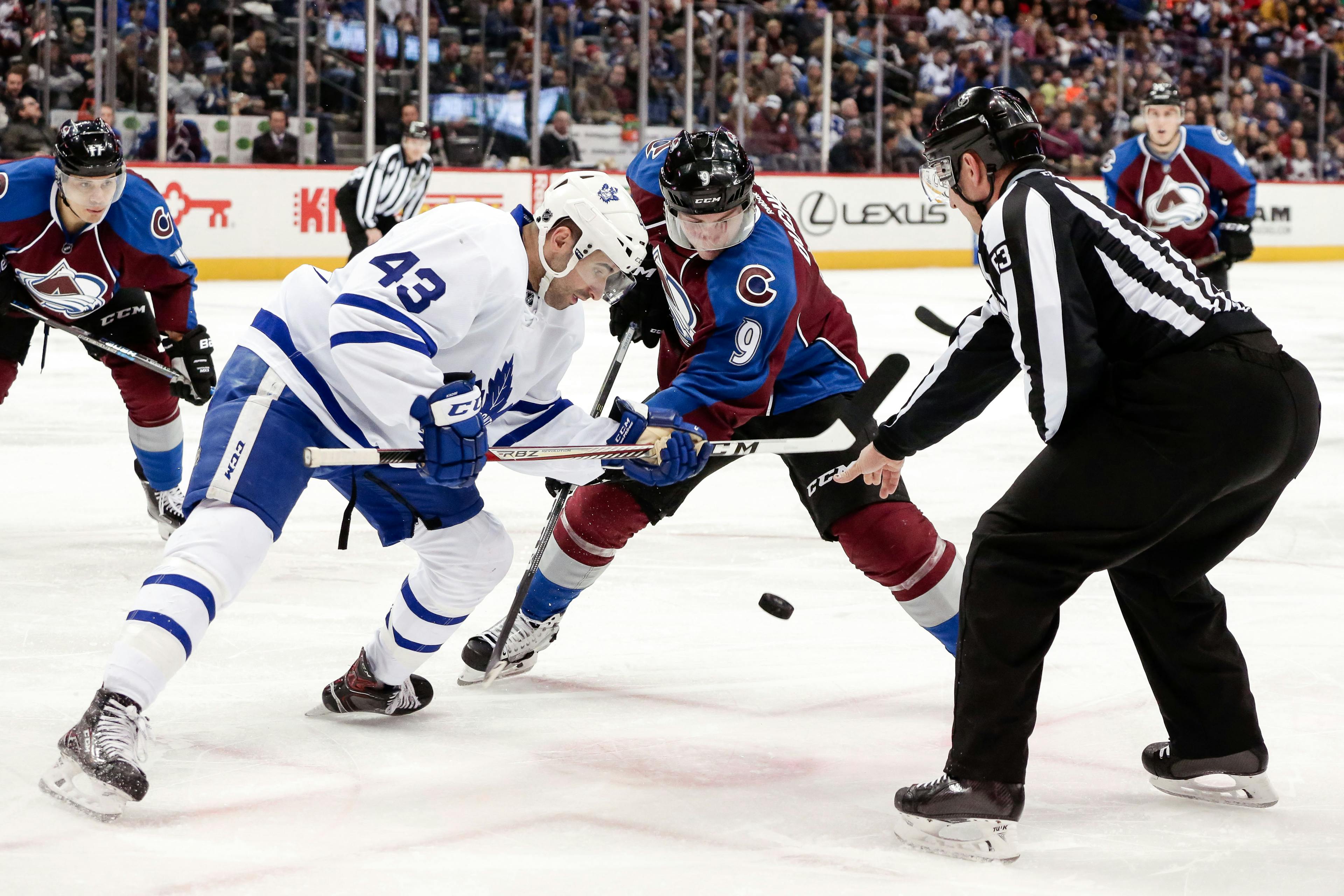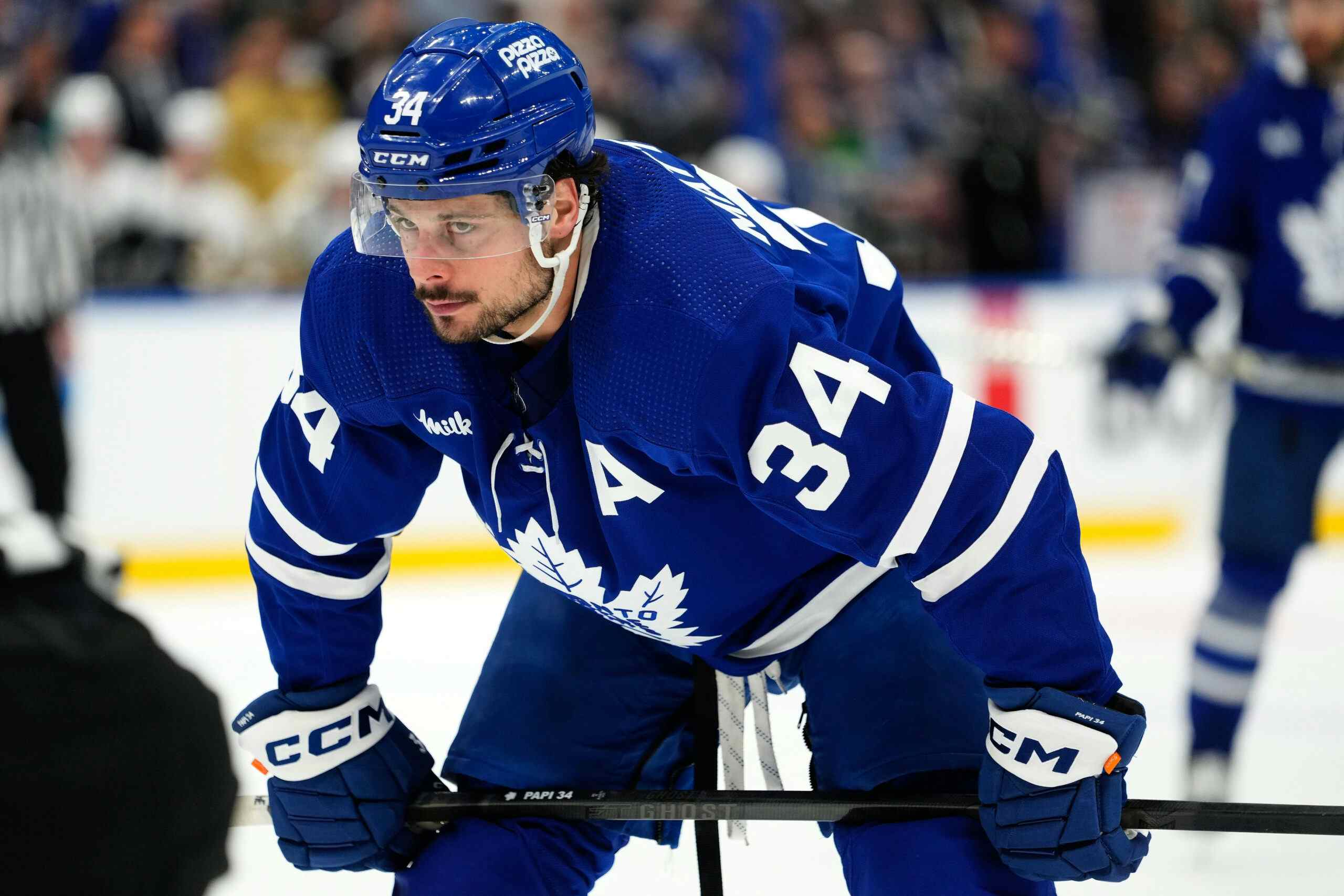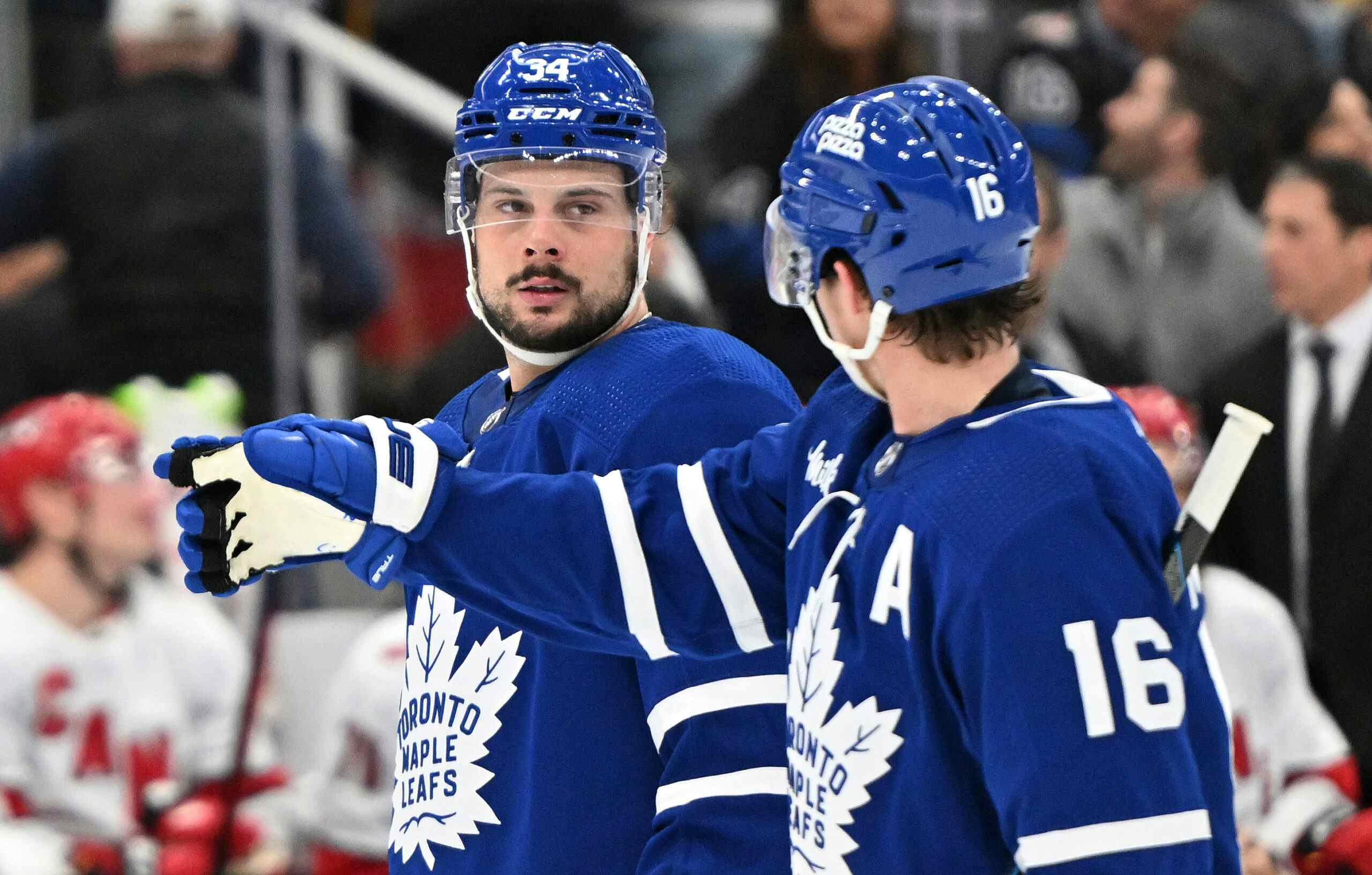Please stop comparing these Leafs to those Avs

Despite the Leafs’ storybook season, many are skeptical of their success. Was this season the real deal, or was it a mirage?
Toronto will always be heavily criticised just because they’re such a talked about (and disliked) team. Realistic arguments as to why they will be successful long-term are bountiful, while arguments against the success of the franchise are fairly weak and petty.
However, there is one point in particular that many skeptics seem to reference: The 2013/14 Colorado Avalanche.
Let’s go back to the lockout-shortened 2012/13 season. Colorado had been on the downswing for a few years at this point but would bottom out. They recorded 39 points in 48 games, good for second-worst in the NHL. The Avs had an 18.8% chance of securing the first overall pick, second only to the Florida Panthers’ 25%. Colorado ended up winning the lottery, selecting Nathan MacKinnon.
The following season, everything changed. Colorado brought in Patrick Roy to be the coach. They also had five players hit at least 60 points, with Matt Duchene’s 70 points leading the way. Semyon Varlamov played in 63 games, posting a .927 SV%, earning second place in that year’s Vezina voting. The Avs went on to lose in the first round against the Wild but, by all accounts, the season was a huge success.
The story seems somewhat similar to that of the Leafs, doesn’t it? Both teams bottomed out (one intentionally), both teams brought in high-profile head coaches, and both teams relied heavily on their young players for success.
It’s a natural comparison – there’s no denying that. However, these two teams couldn’t be more different.
PDO makes it Pretty Damn Obvious
Throughout Colorado’s incredible run, many among the analytics community weren’t buying what the Avs were selling. They had seen this story before – actually, just a year prior, when the Toronto Maple Leafs PDO’d their way into the postseason.
For anyone who isn’t familiar with PDO, here’s the long and short of it: It’s a stat that essentially represents luck. It adds shooting percentage and save percentage (two extremely volatile and, in sh%’s case, unrepeatable stats) and voila, the teams who lead in this category are usually the luckiest.
Well, as it turned out, in 2013/14 Colorado owned the second highest PDO in the NHL at 101.75, with their expected PDO at 100.01. On the surface, a nearly 2% combined increase in sv% and sh% may not seem like a lot, but it makes a hell of a difference. Also, a common trend with these high-luck, surprise teams is that they’re usually abysmal possession wise, and Colorado was no different. They had the league’s sixth-worst possession rating (47.69 CF%), which added fuel to the fire.
As I mentioned, this prompted many to suggest that Colorado was, essentially, fluking it. Some even made pleas to their teams to trade for the Avs’ first rounder the following season, as a massive dip in performance was expected – PDO is not repeatable.
Here’s a rolling average view of Colorado’s PDO compared to league average (always 100.00) from that season:

This wasn’t the first time a high-PDO cinderella team made a run only to fall short in the following seasons.
A year before Colorado, Toronto relied heavily on the highest PDO in the league to get to the playoffs (102.99) while ranking dead last in possession (44.08 CF%). We all know what happened from that point forward.
The year after Colorado, it was Calgary. That team’s success was attributed to their never-give-up mentality and scrappiness, remember? What happened the following season? The ‘magic’ was gone – ‘magic’ being their fourth highest PDO of 101.15 (along with third worst possession, 44.44 CF%).
Is PDO the be-all, end-all statistic? No, it’s not – good teams have high PDO’s all the time. However, when used with other metrics, it’s a great telltale sign that something may be wrong.
Anyways, the reason this is important is because, 1) unsustainable play was the biggest reason for Colorado’s success, that’s the main point this article is trying to make and, 2) this year’s Toronto Maple Leafs were not a lucky or unsustainable team.
#TheLeafsWereActuallyGood
So it’s all great and fine that I can tell you about Colorado’s luckiness, but here’s a way to show you. These are their shot maps, both for (left) and against (right) from the 2013/14 season. The more red means that team shot/allowed shots at a higher rate from that area than league average, while the blue shows the opposite:

See what I mean? In what world is that a recipe for success? Are either of these shot maps conducive to an even strength shooting percentage of 8.8% (2nd best that season) or save percentage of 92.95% (7th best)? No, they’re most certainly not.
Meanwhile, take a look at the 2016/17 Toronto Maple Leafs. These are their shot maps, both for (left) and against (right) from the 2016/17 season:

Right off the bat, you can see that offensively, the Leafs were essentially the complete opposite of the Avs. Colorado had a hard time getting anywhere near the net, while Toronto practically lived in the slot.
The Leafs ranked second this season in terms of adjusted xGF with just over 194. They ended up with just over 171, underperforming by 26 even strength goals. Colorado, meanwhile, was expected to score just over 154 even strength goals in 2013/14, but ended up with 171 – overperforming by 17 goals. Toronto also averaged nearly tw0 full scoring chances more than Colorado over 60 minutes, which is pretty significant.
Defensively, both teams sucked. Here’s a look at their adjusted numbers:
| Team | CF% | xGA60 | GA60 | SCA60 | SCF% |
| 13/14 Avs | 47.69 | 2.64 | 2.35 | 9.15 | 47.81 |
| 16/17 Leafs | 51.25 | 2.72 | 2.55 | 8.70 | 53.76 |
To be honest, I was surprised to see Colorado come away with a more favourable xGA60. It probably has something to do with the fact that Toronto allowed 200 more shot attempts than the Avs, which is why you see more red in Toronto’s zone (although it’s farther away from the net). In the end, though, the Leafs were still a net positive in terms of expected goals and chances. The Avs weren’t.
Lastly, if you’re wondering about Toronto’s PDO this year, it was right around normal at 100.62. A little high? Barely, but their expected PDO was 100.38 so they were pretty bang on in terms of their expected sh% and sv%.
To sum things up, Colorado was okay offensively, terrible defensively team who got insanely unsustainable goaltending and shooting luck. The Leafs, meanwhile, were an offensive juggernaut that, although they defended the crease decently well, allowed shots in bulk and have lots of work to do on defence.
Toronto’s roster vs. Colorado’s
There were three main cogs that turned the wheel of success for Colorado: Matt Duchene, Gabriel Landeskog, and Nathan MacKinnon. Likewise, Toronto had three youngins that played a huge role in their season, too: Auston Matthews, William Nylander, and Mitch Marner.
This is an easy comparison to make. Duchene, Landeskog, and MacKinnon scored 198 points at a combined age of 60-years-old. Matthews, Marner, and Nylander scored 191 points at a combined age of 57. Pretty uncanny.
When taking a deeper look at the numbers, something becomes evident. Both Landeskog and Mackinnon greatly overperformed against their xPDO (Landeskog by nearly 3%, MacKinnon by nearly 4%), while Duchene slightly underperformed. On Toronto’s side of things, Matthews and Nylander each slightly underperformed, while Marner overperformed by just under 2%.
Here’s a look at how these six players compare in a few different offensive categories.
| Player | xGF60 | SCF60 | SCF% |
| A. Matthews | 3.23 | 11.50 | 54.04 |
| W. Nylander | 3.30 | 11.72 | 56.42 |
| M. Marner | 3.01 | 10.04 | 51.03 |
| G. Landeskog | 2.70 | 10.51 | 57.55 |
| M. Duchene | 3.05 | 11.41 | 53.98 |
| N. MacKinnon | 2.43 | 8.69 | 45.48 |
At this point in time, I think it’s fair to say that Marner, Nylander, and Matthews are the better trio – not to mention that they were all rookies this past season. Don’t get me wrong, Duchene, Landeskog, and MacKinnon are all great players, I’m just not sure if, with the exception of MacKinnon, they’ll be able to replicate what they did that season. Toronto’s players should be expected to reproduce, if not improve on last year’s numbers.
Going further down the roster, there are definitely some more similarities. You could point to Paul Stastny and Ryan O’Reilly combining for very similar production as Nazem Kadri and James Van Riemsdyk. Erik Johnson and Jake Gardiner put up similar offensive stat lines, although Gardiner is much, much better defensively. Both teams seemed to get decent depth scoring, too.
What’s the major difference, then? Because there are very clearly some similarities in the rosters.
One of the big things to consider is that the 16/17 Leafs were younger than the 13/14 Avs and got a lot more production out of their younger players.
The 13/14 Avalanche had ten players 27-years-old or younger play for them that season. These players combined for 420 points. Meanwhile, the Leafs had 13 players 27-years-old or younger who combined for 510 points. Even more impressive is that seven of these players for Toronto were rookies, while only one (MacKinnon) was a rookie for the Avs. This also doesn’t factor in players like Josh Leivo and Kasperi Kapanen, who, especially in Kapanen’s case, will most likely become large parts of this team going forward.
Lastly, just a quick look at Colorado’s defensive play compared to Varlamov’s .927 SV% would have shown itself to be unbelievably unsustainable. Meanwhile, while Toronto was also a bad defensive team, Freddie Andersen’s .918 SV% is much more realistic, repeatable, and closer to his career average.
Basically, it comes down to this: Toronto’s entire group has room to grow. They’re young and, for the most part, their best years are still well ahead of them. On Colorado’s side, there was much less room for growth, as nearly all their support players were getting up there in age and past their primes. That, plus the fact that many of Colorado’s players seemed to be overperforming while Toronto’s weren’t, paints a much different picture.
So, if it wasn’t luck, how did the Leafs do it?
As I mentioned, the Leafs added seven full-time rookies to the team. Three of them (Matthews, Marner, Nylander) hit at least 60 points. Two of them (Brown and Zaitsev) hit at least 35 points. Hyman scored 28 points, and Soshnikov scored 9 points. That’s hundreds of points of production suddenly being added to a roster.
Also, it’s important to keep in mind that good players make other players better, and that’s exactly what we saw happen with long-time Leafs like Van Riemsdyk and Bozak. JVR hit a career-high 62 points this season, while Bozak netted a career-high 55. What’s the one thing that’s changed with those two players? First of all, they’re not playing first line competition anymore. Second, Mitch Marner was added to their line.
We also saw this happen while Nazem Kadri was playing alongside William Nylander. Yes, Kadri had a fantastic overall season and his success was caused more by him than his wingers. Still, though, before Nylander was paired full-time with Matthews, he played 360 even strength minutes with Kadri. You can’t tell me that Nylander wasn’t a massive upgrade over Kadri’s winger last year (Michael Grabner).
Next, the effect a coach like Mike Babcock can make on a team should not be understated. I know he makes some odd moves personnel-wise, but I don’t know that there’s a better systems-based coach in the NHL. In his second season with the team, players who had been there already knew the system, and the new ones they brought in were more than good enough to learn it fast and effectively.
Sure, Patrick Roy was fun in the beginning. He was brash, bold, and seemed to be the perfect security blanket for his players. Unfortunately, he just wasn’t a very good coach. That’s another major difference.
The addition of Freddie Andersen was also an important move, although not one that would have made or broken the season. Don’t get me wrong, he was great, but nothing tells me he’s any better than James Reimer, which isn’t a bad thing at all.
In Conclusion…
Colorado was a net negative in everything they did, got unreal goaltending, good shooting luck, and unsustainably-good seasons from a few of their players. Toronto may have been bad defensively, but they were still a net positive. Their goalie didn’t carry them and their shooting percentage didn’t carry them. That’s the difference.
Remember, wins are not always an accurate representation of how good a team is. Some teams get lucky, others unlucky, and some perform exactly to their expectations. To take a team at their point total, as we’ve seen time and time again, is not the best measure of future success.
Recent articles from Evan Presement





